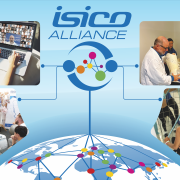Adult Scoliosis: look after yourself!
Adults with scoliosis are often convinced there is nothing more that can be done for their problem, partly because it has long been thought that scoliosis, in any case, doesn’t get any worse once you have finished growing. Unfortunately, now it has been shown not to be the case. We at ISICO, as well as monitoring patients through periodic checks, know that there is treatment available that may improve these patients’ conditions.
We frequently tell our patients that they will only be able to effectively manage their back and their scoliosis if they have a clear understanding of their condition and how to address it, which means: keeping fit, regularly doing appropriate exercises, and implementing strategies to avoid overstraining their back in everyday life.
“Scoliosis in adults, treated or otherwise, may be one of three types: scoliosis that was discovered in adolescence, scoliosis that came to light in adulthood, and so-called de novo scoliosis. This latter form, typically seen in old age, is associated with often significant clinical symptoms, says our orthopaedic specialist, Dr Monia Lusini. For adolescent-onset scoliosis (which may have been discovered either in adolescence or in adulthood), the severity threshold beyond which the condition may worsen in adulthood is 30°, while curves greater than 50° are obviously much more likely to go on evolving, so much so that 50° is considered the cut-off point for surgery. Scoliosis worsens much more gradually in adulthood (by around 0.5-1 degree per year on average) often leading to the lateral and forward bending of the trunk typically seen in old age. The severity of de novo scoliosis, on the other hand, is generally mild to moderate, with the curve not normally exceeding the 30° threshold; nevertheless, this form can be associated with quite marked clinical symptoms.”
According to the data we have, mild curves (measuring less than 30°) are generally stable, whereas more severe scoliosis needs to be monitored, as a precautionary measure, through regular checks every 1-5 years.
And what happens if these checks show that the condition is worsening? “In that case, it may be useful to have a specific exercise programme drawn up by experienced and expert professionals in order to keep the situation stable” replies ISICO physiotherapist Alessandra Negrini. “Scoliosis is associated with several problems: a risk of back pain, aesthetic issues, progressive deformity, and problems with the internal organs (these are usually significant only in patients with curves greater than 70° and those with childhood-onset scoliosis)”.
This is why we at ISICO encourage our patients to do as much physical activity as they can, and to work out with their physiotherapist, a programme of specific exercises designed to strengthen the muscles that support the spine and combat the pain.
It has been scientifically proven (in two studies published by our group: Adult scoliosis can be reduced through specific SEAS exercises: a case report and Scoliosis-Specific exercises can reduce the progression of severe curves in adult idiopathic scoliosis exercises: a long-term cohort study) that appropriate and specific exercises tend to slow down or arrest the evolution of scoliosis.
Alongside physiotherapy, we at ISICO are currently trying out, in patients with scoliosis pain and ascertained progression of the condition, an elastic brace called Spinecor: when patients feel their back “giving way”, this device, even though it cannot be expected to lead to an improvement visible on X-rays, provides extra external support and can give them a few hours relief.












Leave a Reply
Want to join the discussion?Feel free to contribute!